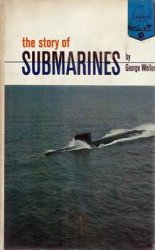The Battle of the Philippine Sea took place off the Mariana Islands on June 19 and 20, 1944. It resulted from the effort of the Imperial Japanese Navy to attack the U. S. Navy Fifth Fleet of Admiral Raymond Spruance then supporting U. S. Marines and U. S. Army amphibious landings on the islands of Saipan, Guam, Rota, and Tinian that had begun on June 15. The largest aircraft battle of the war, the Battle of the Philippine Sea was an overwhelming victory for the U. S. Navy, which destroyed what remained of Japanese naval aviation.
Admiral Jisaburo Ozawa’s First Mobile Fleet consisted of five battleships, 13 cruisers, 28 destroyers, nine aircraft carriers and 473 aircraft. The larger, newer, and technologically superior U. S. Navy force, Task Force 58, consisted of seven battleships, 21 cruisers, 69 destroyers, and 15 aircraft carriers with 956 aircraft piloted by seasoned American airmen who were veterans of several prior combat actions.
The Japanese, whose location in the Philippine Sea was made known to Spruance well in advance by American submarines, radio-direction finding, and radar, launched four successive carrier air strikes toward the U. S. fleet on June 19. Surprised and intercepted 150 miles away from the American fleet by U. S. naval aviators, the outclassed Japanese fliers were annihilated in what became known as “the Great Marianas Turkey Shoot.” Only 29 American warplanes were lost, compared to Japanese losses of 301 aircraft the first day. On June 20, Spruance launched a further devastating attack on the Japanese fleet, using aircraft and submarines, destroying a further 145 Japanese aircraft, sinking three aircraft carriers, damaging two others, and sinking and damaging numerous other smaller vessels. Of the 80 American aircraft lost during the battle, most were forced to ditch at sea after running out of fuel at the extreme limits of their range, and most of the downed American pilots were recovered.
Following the Battle of the Philippine Sea, the American landings continued without threat of interference from Imperial Japanese Naval forces and the Marianas were secured by August 1944.
See also air POWER; World War II Pacific theater.
Further reading: William T. Y’Blood, Red Sun Setting: The Battle of the Philippine Sea (Annapolis, Md.: Naval Institute Press, 1981).
—Clayton D. Laurie




 World History
World History









